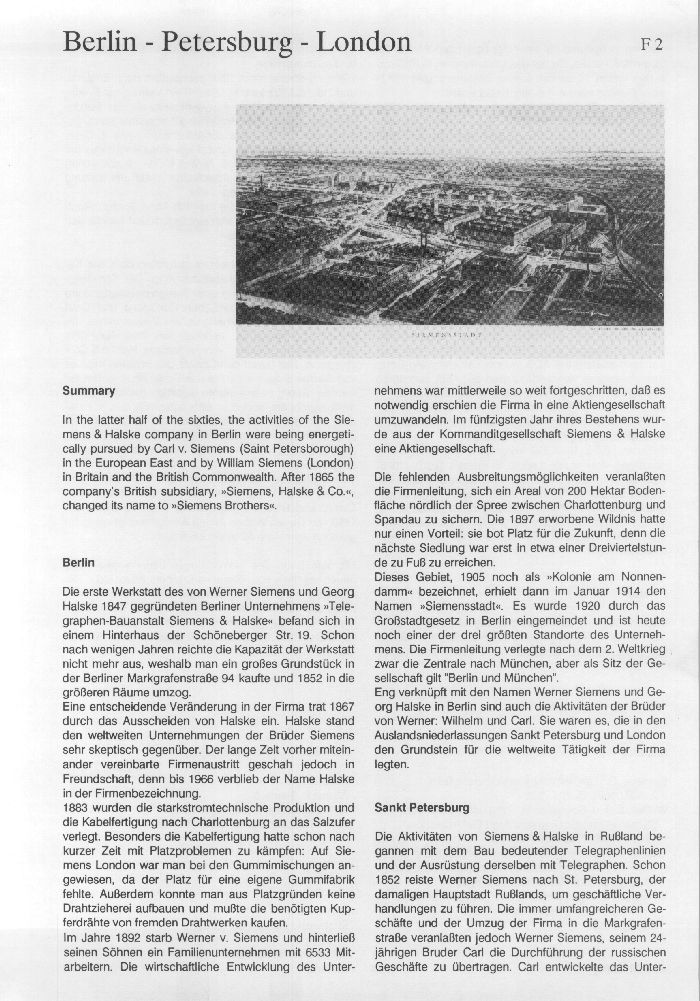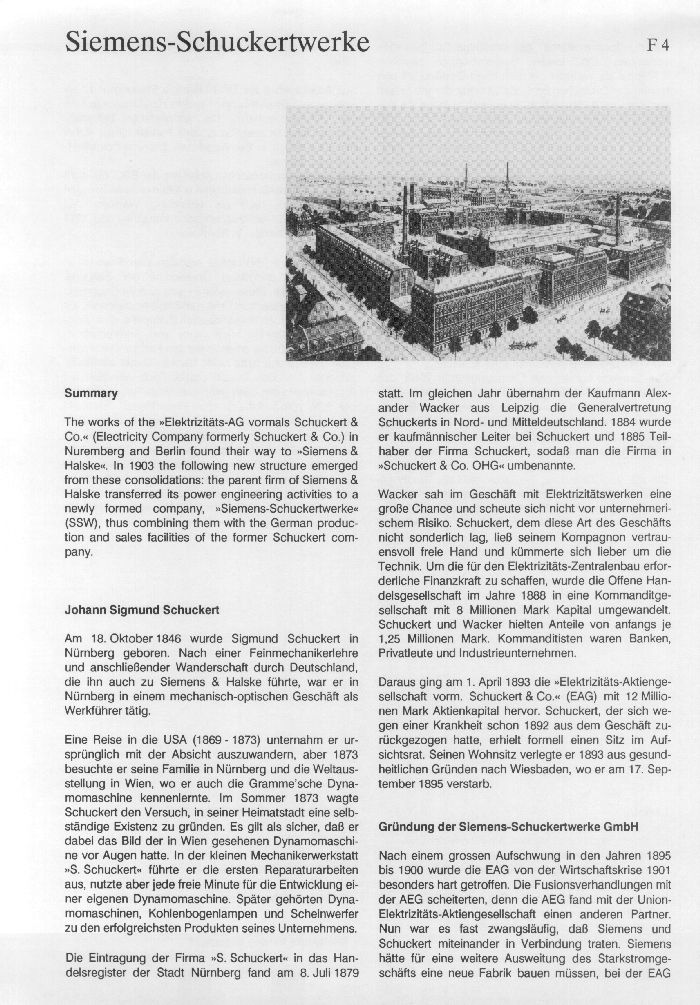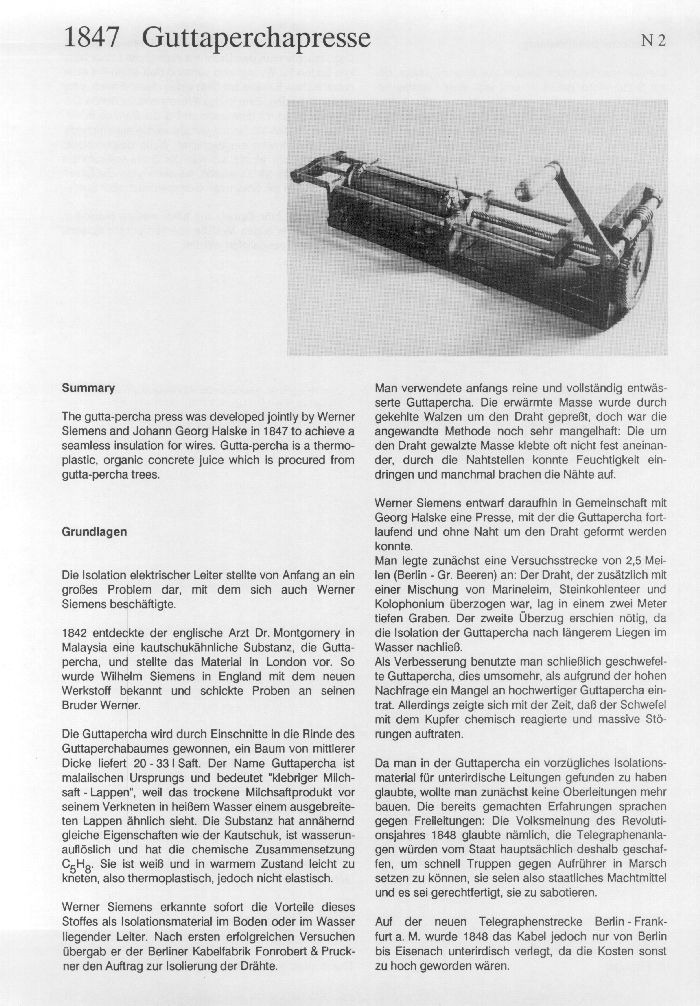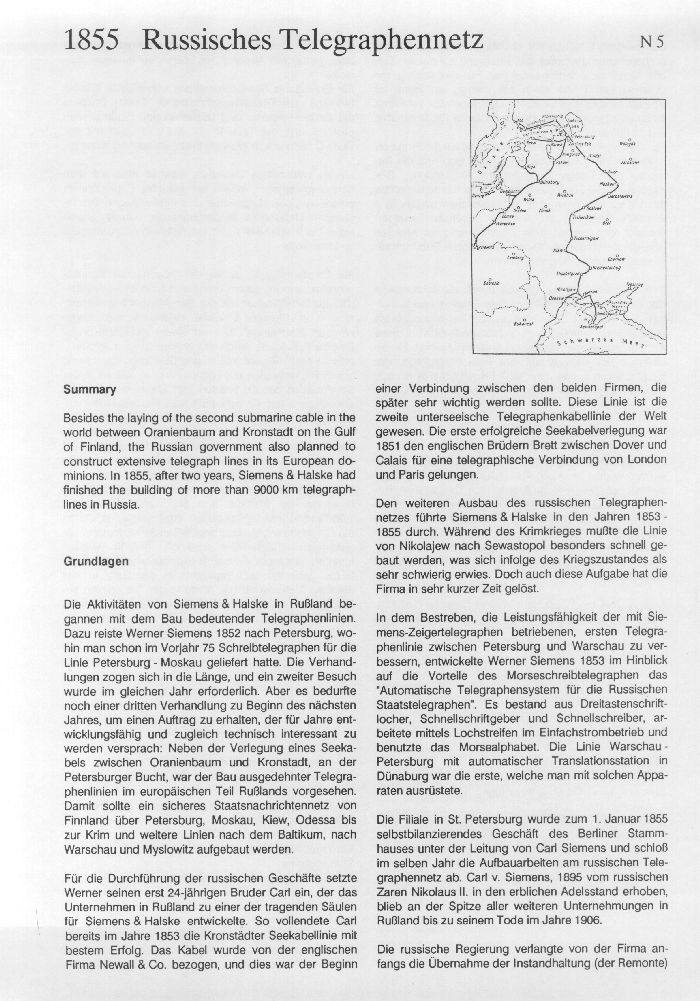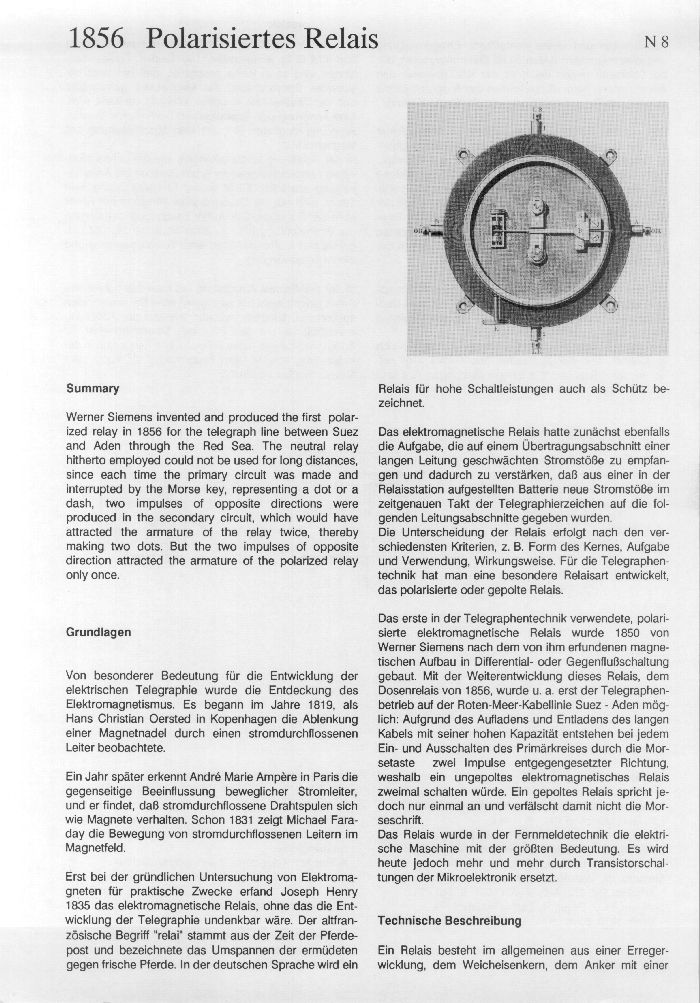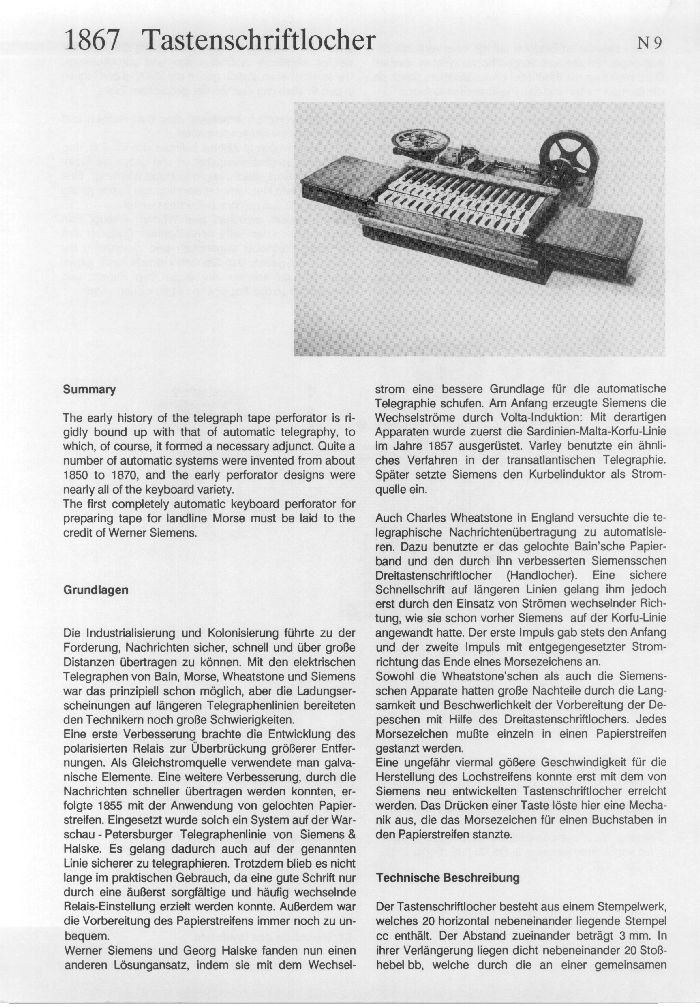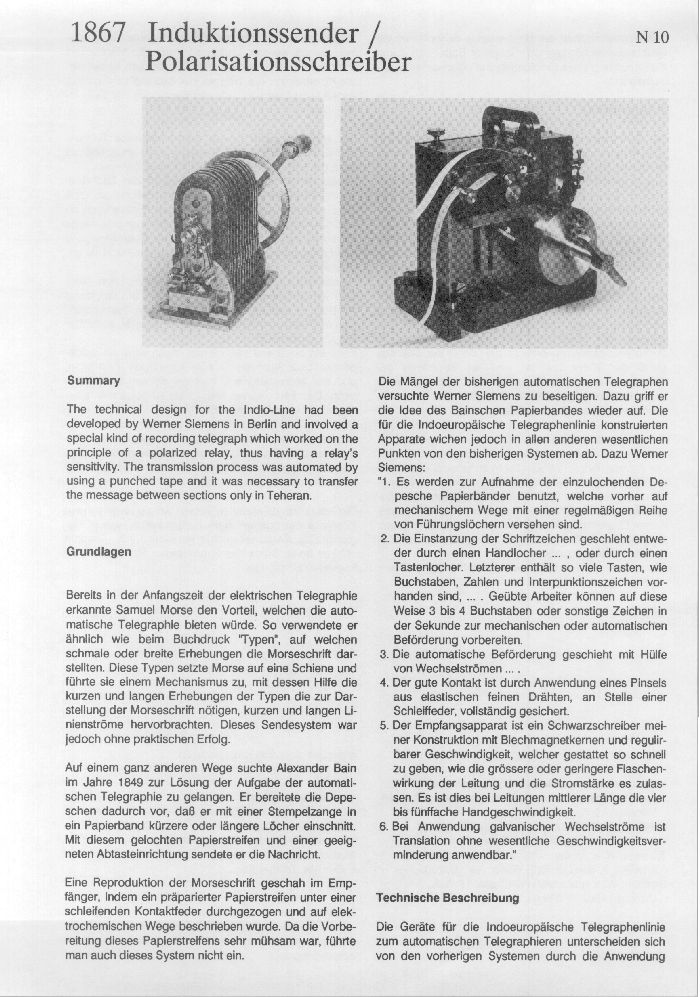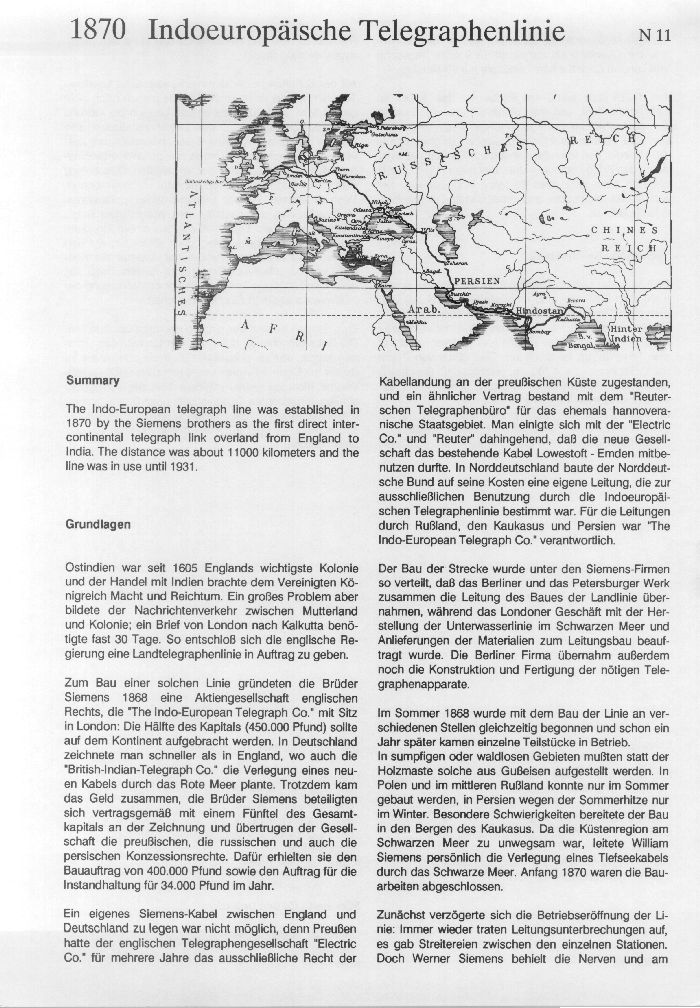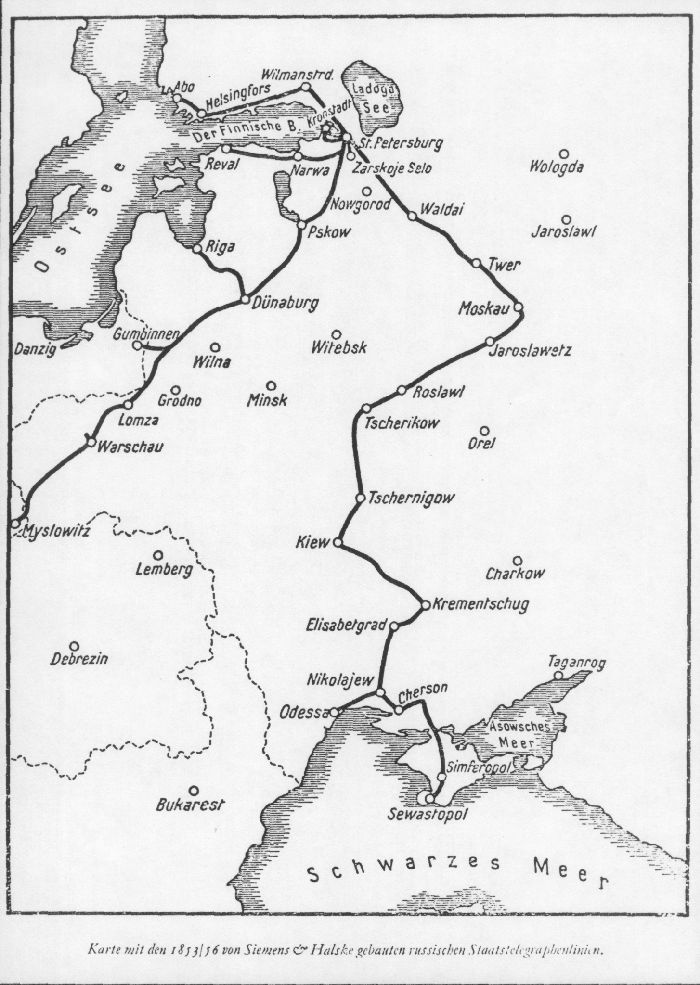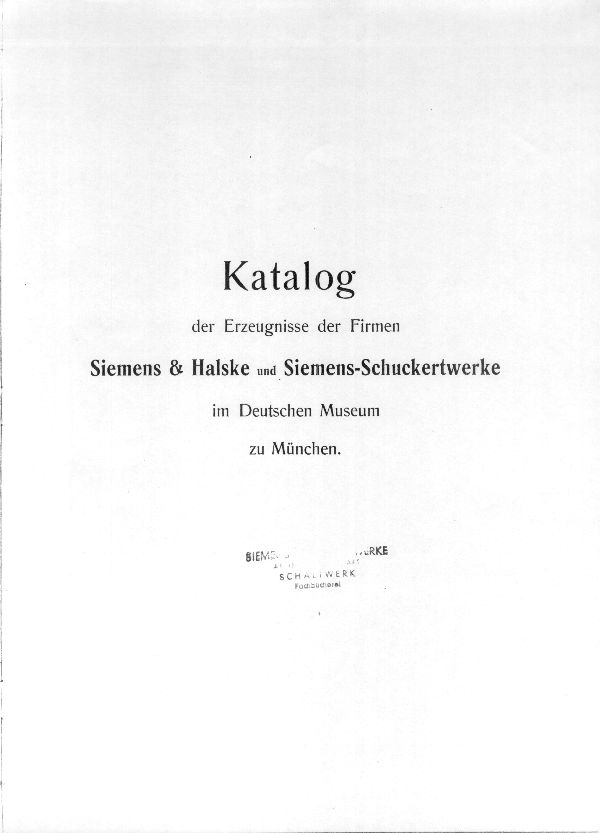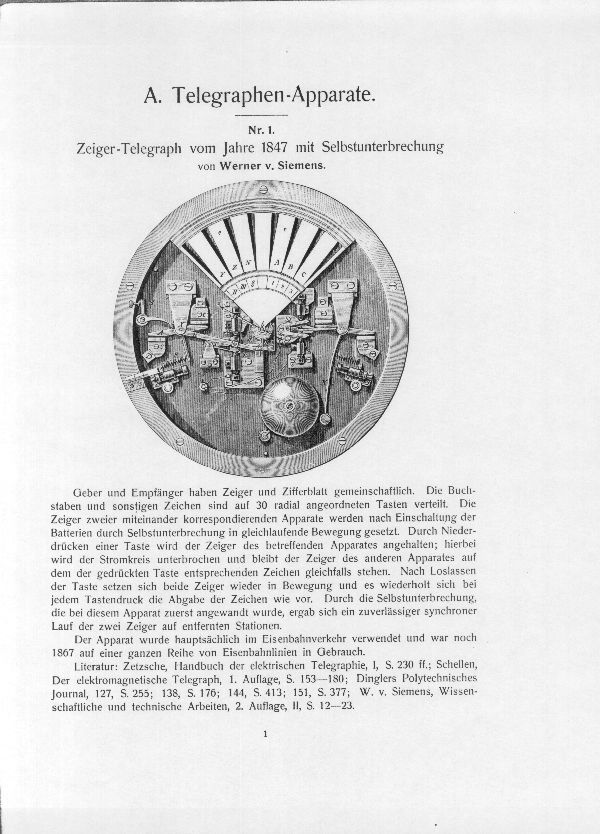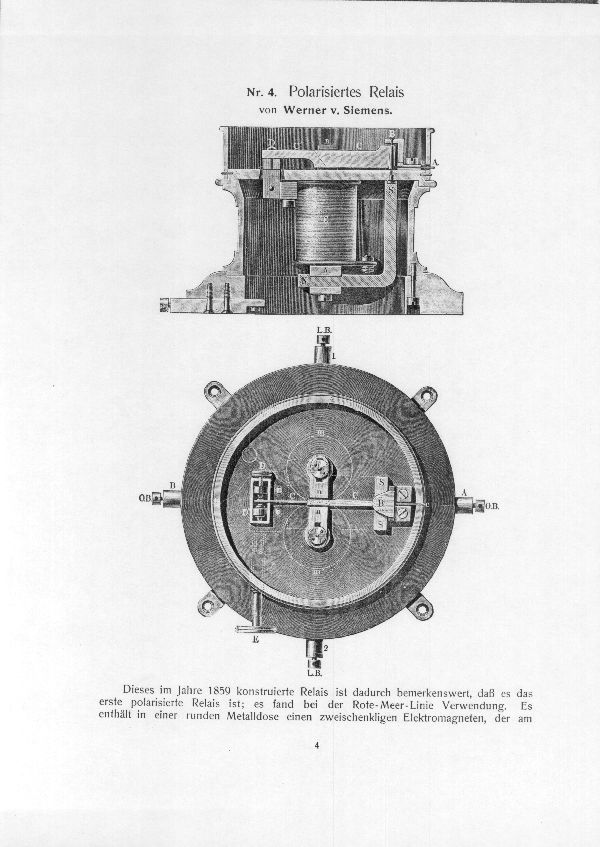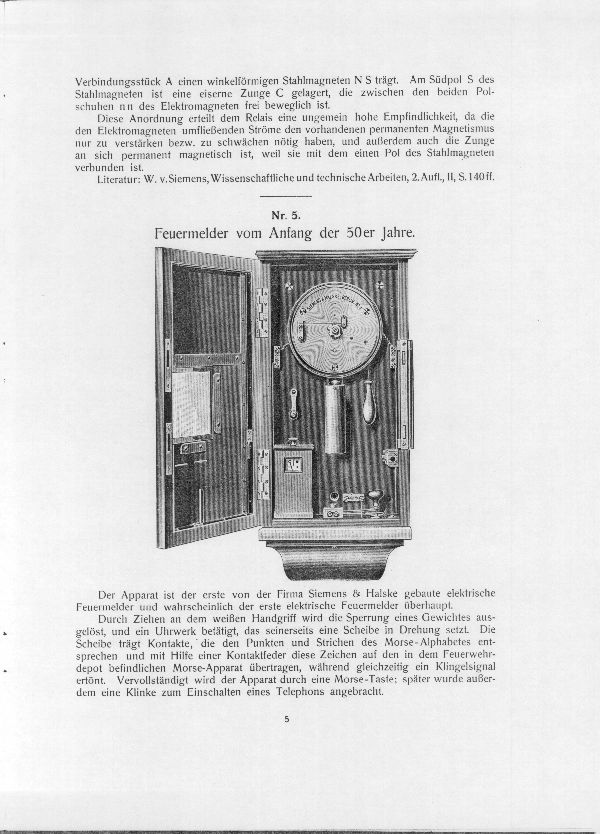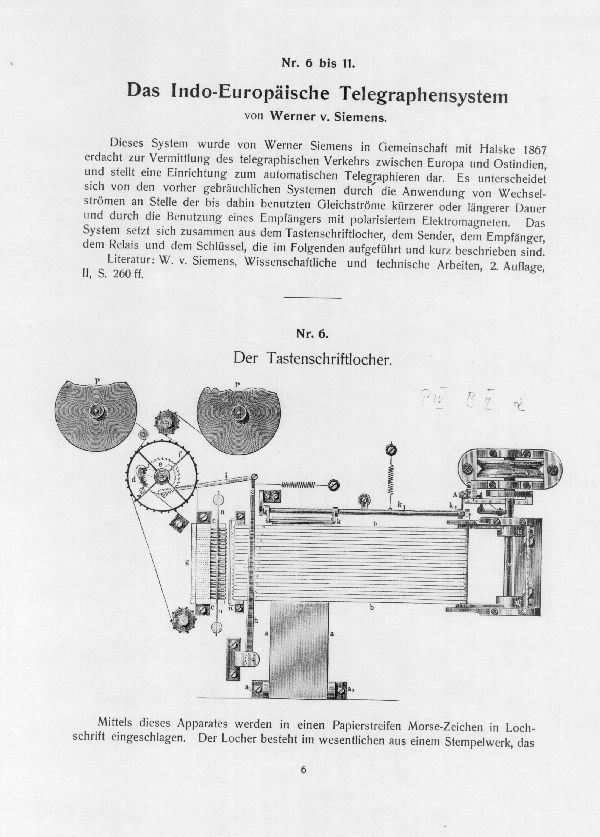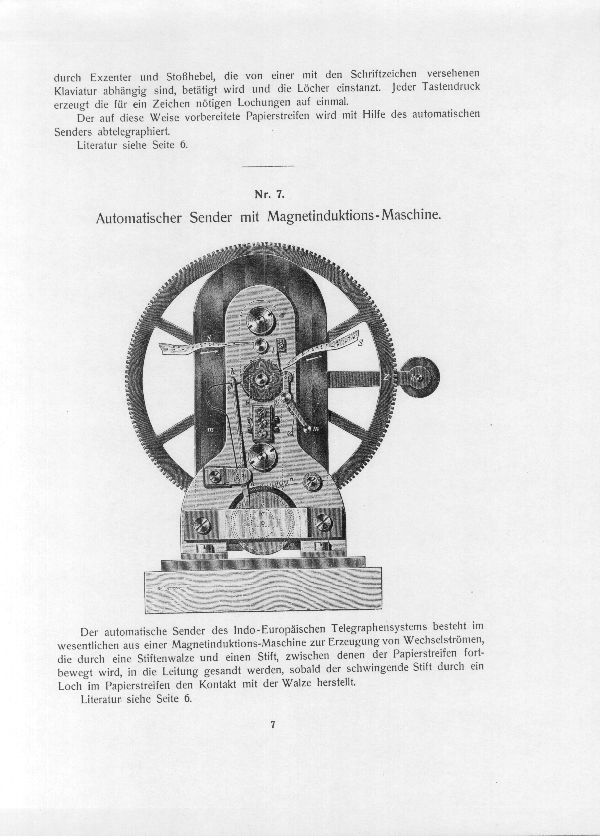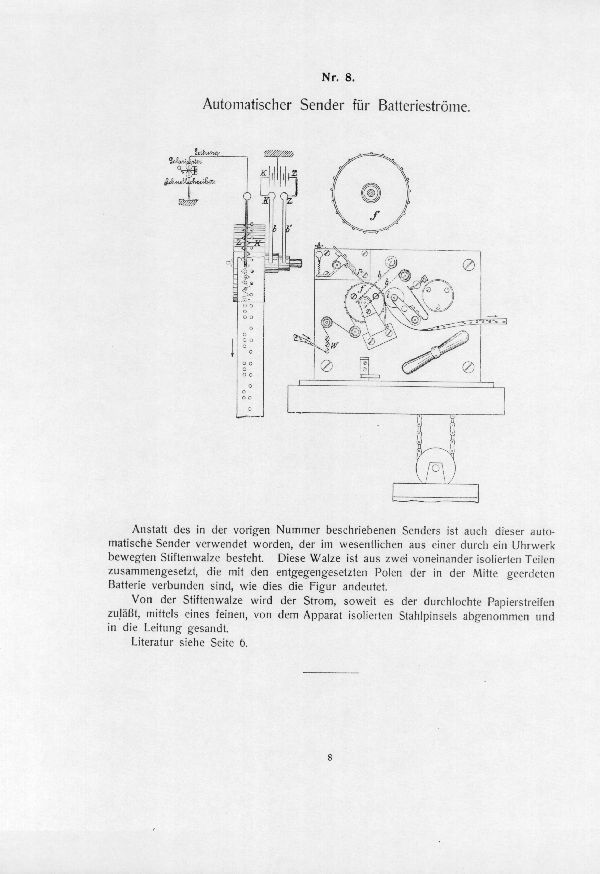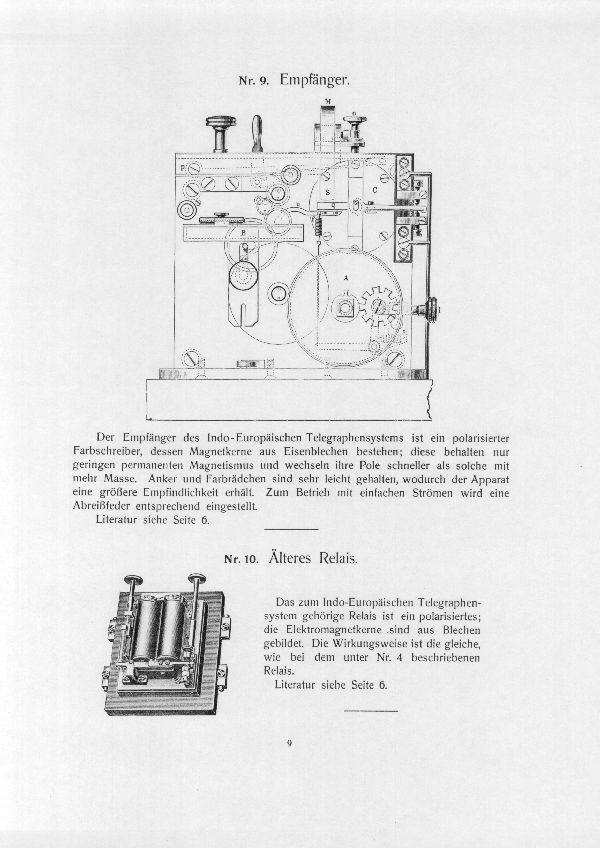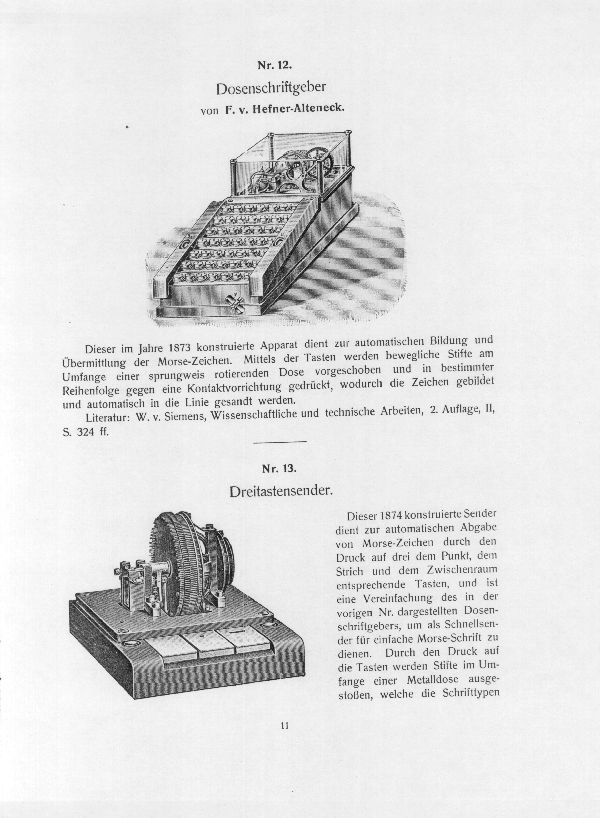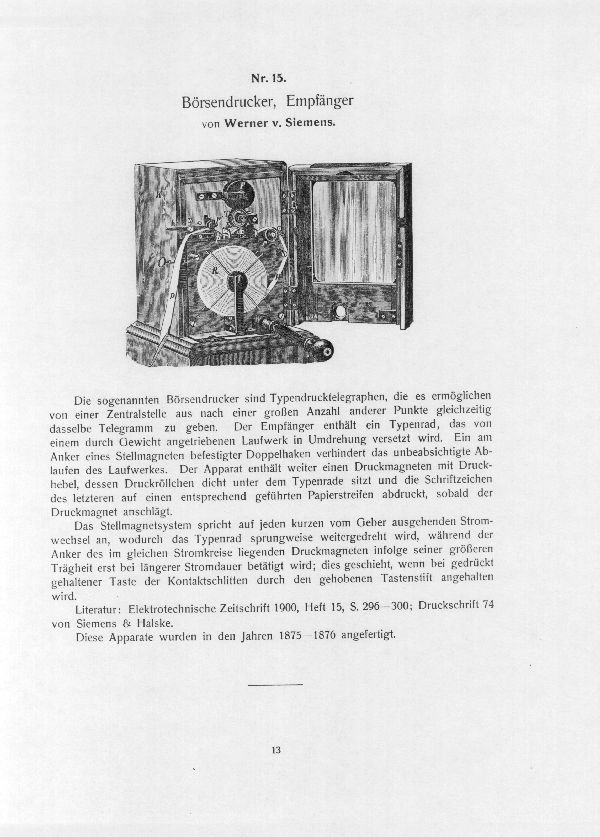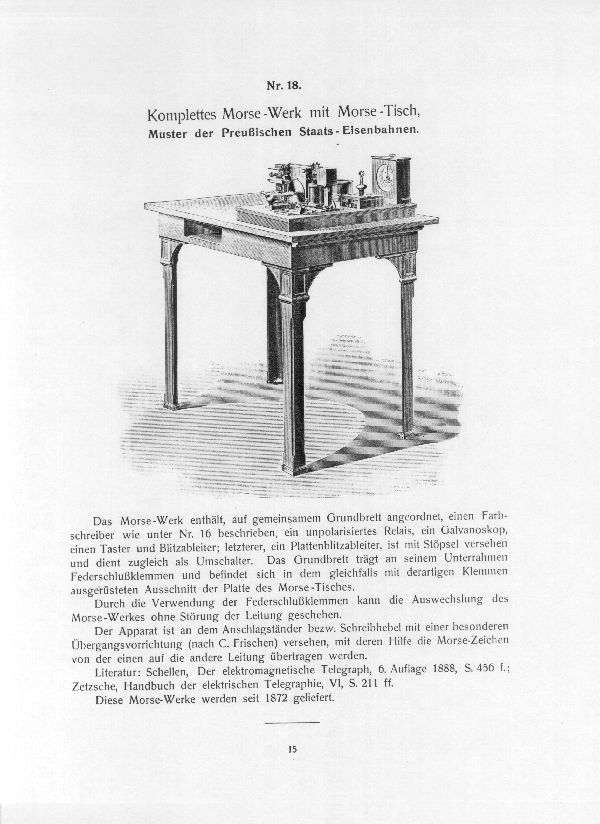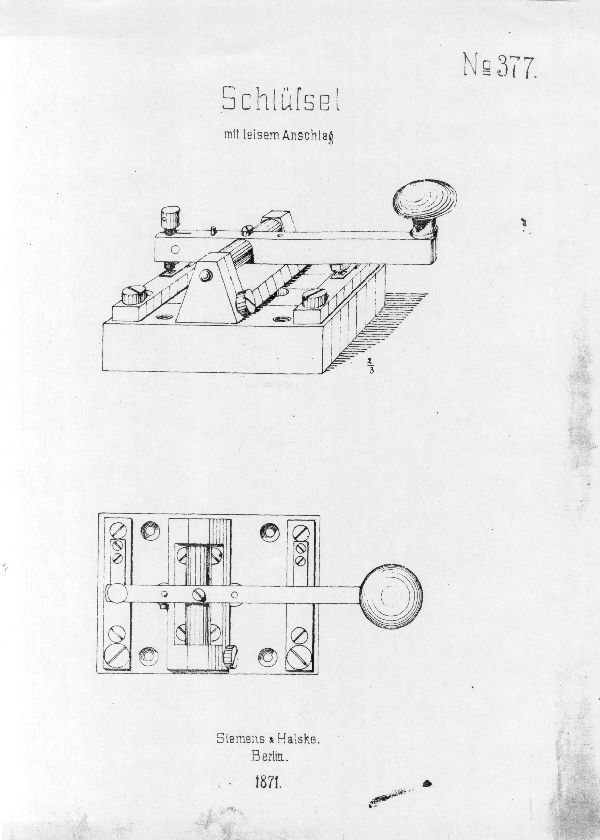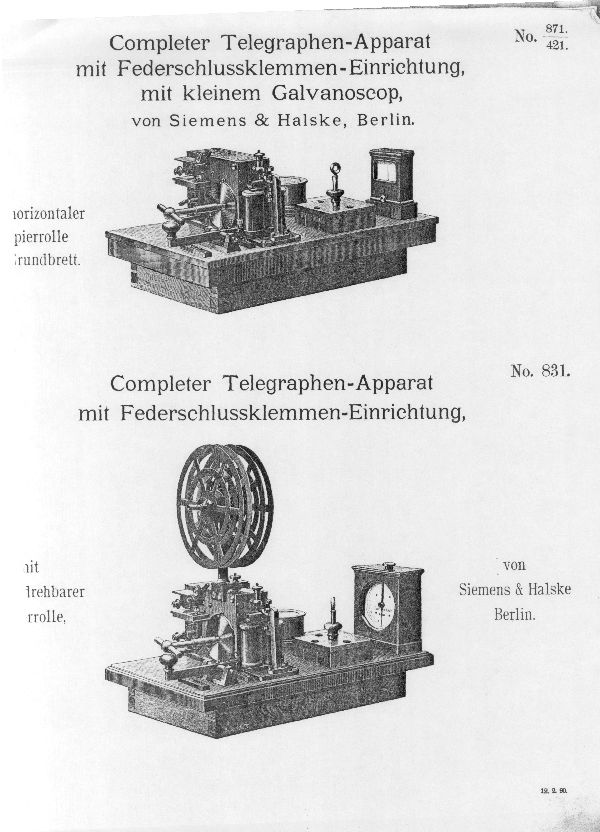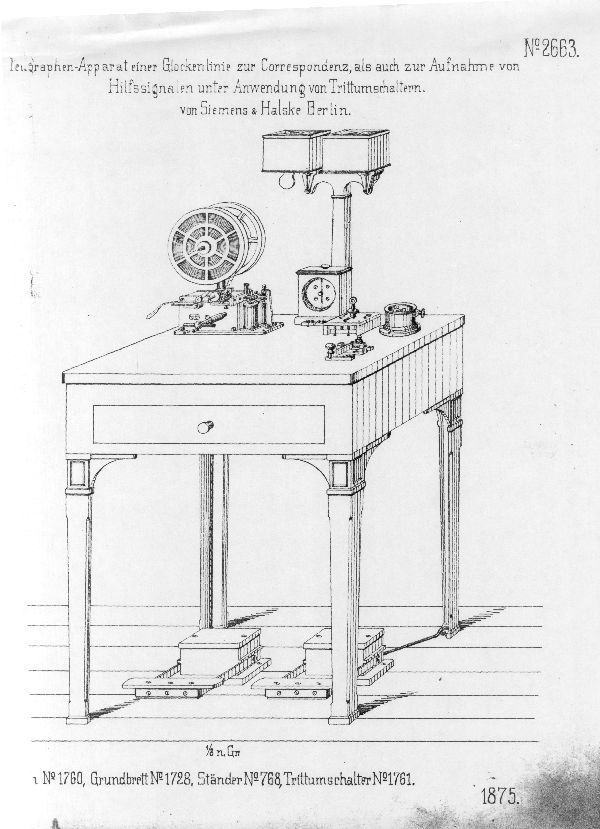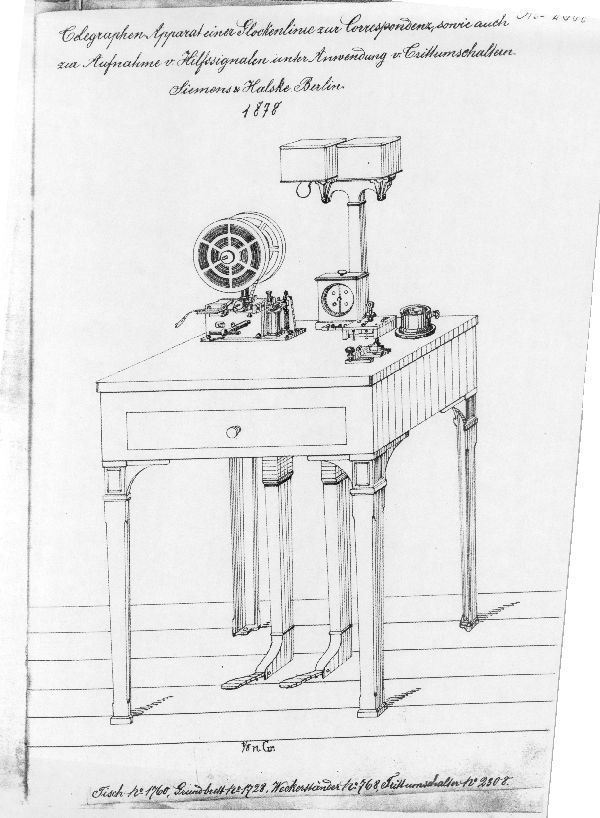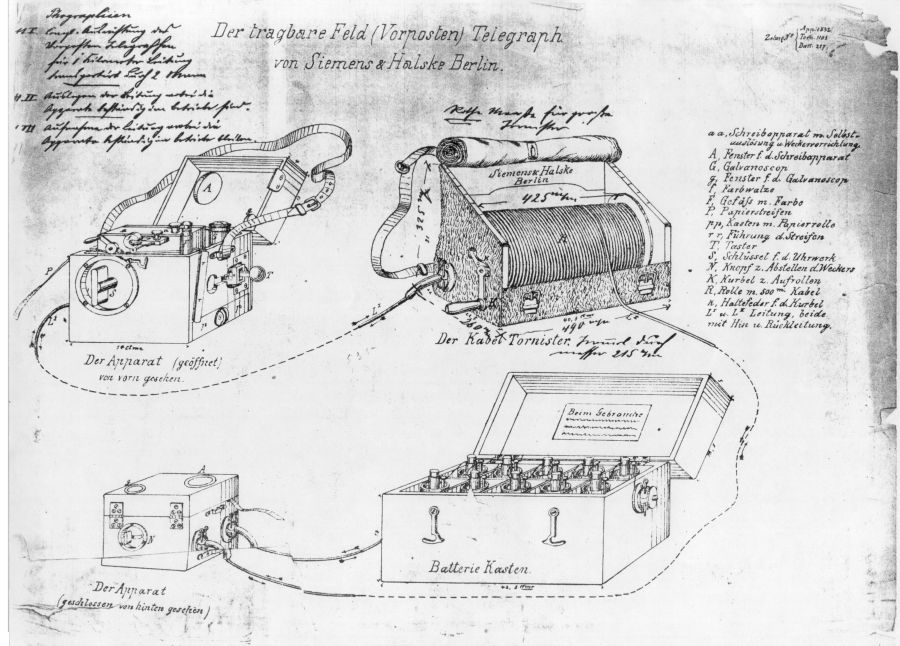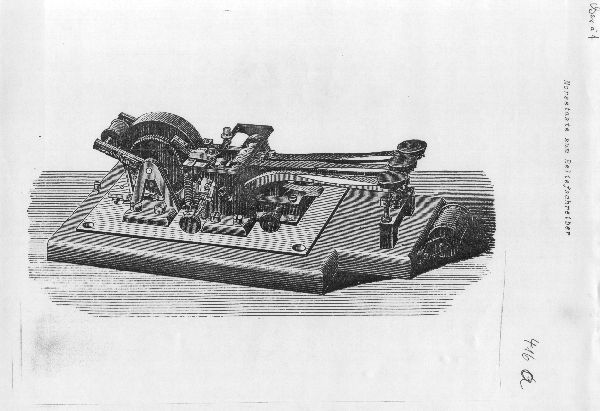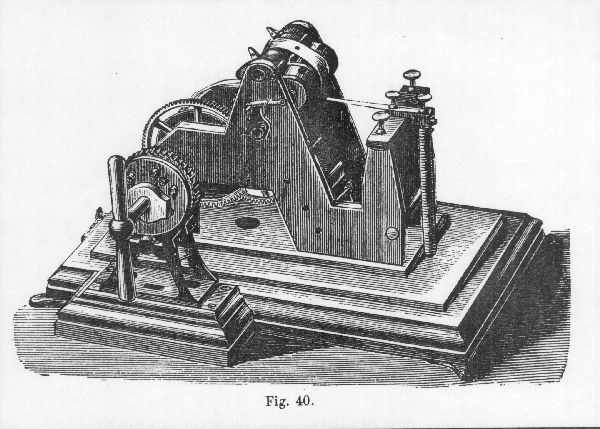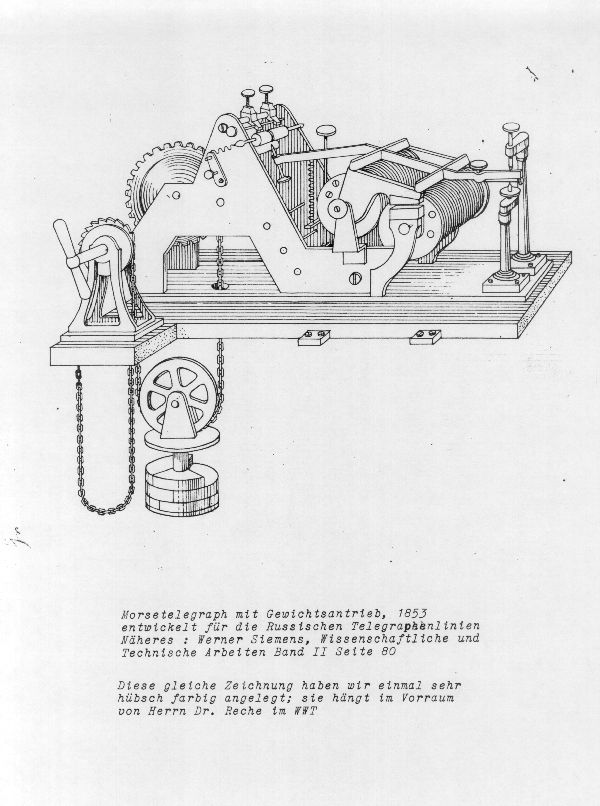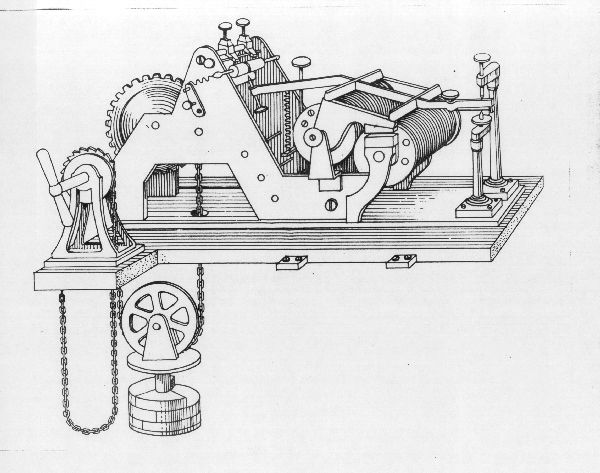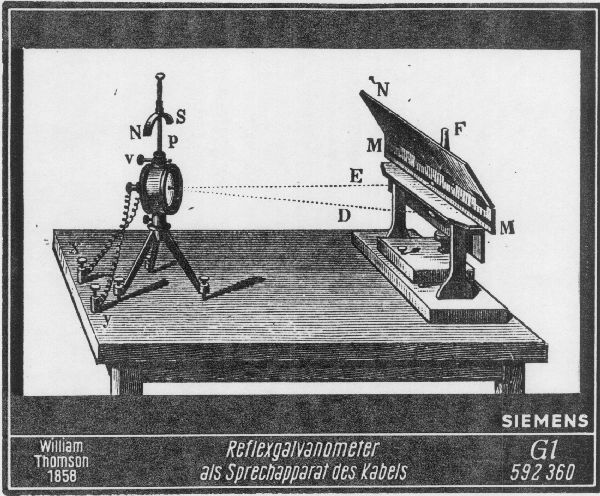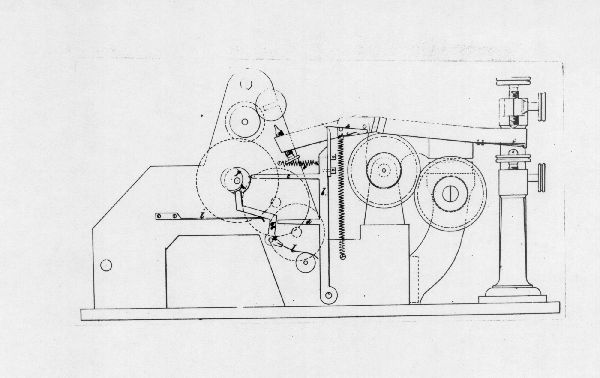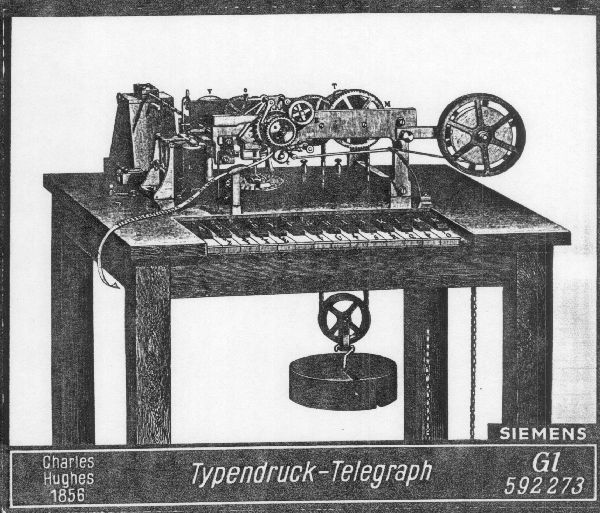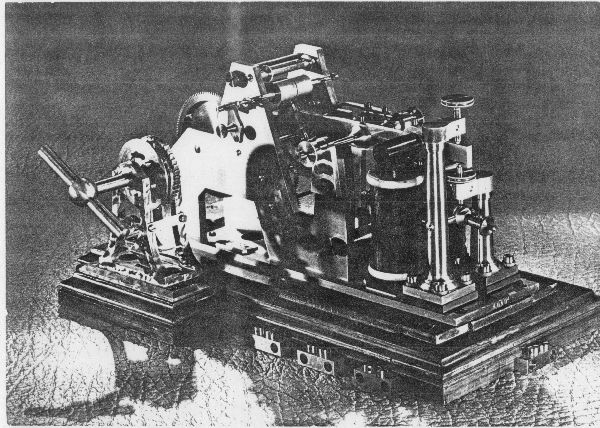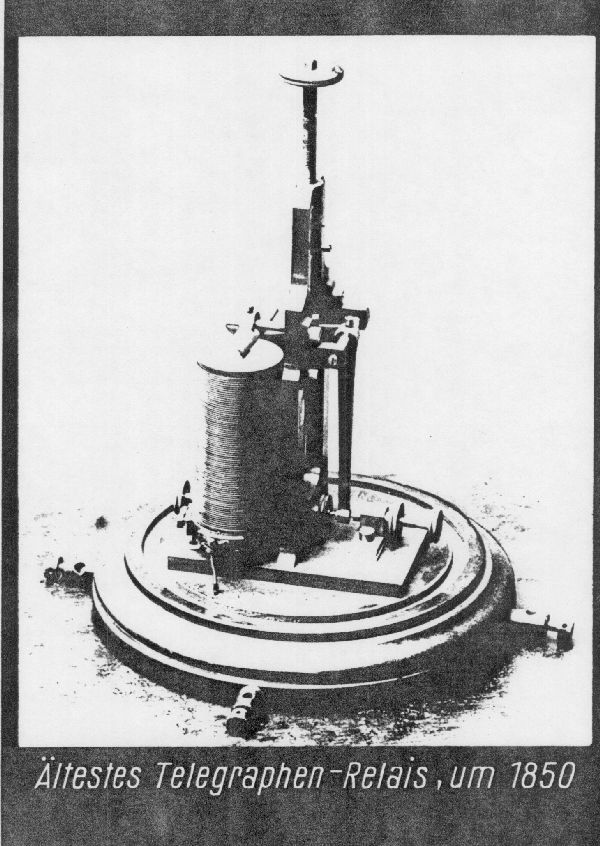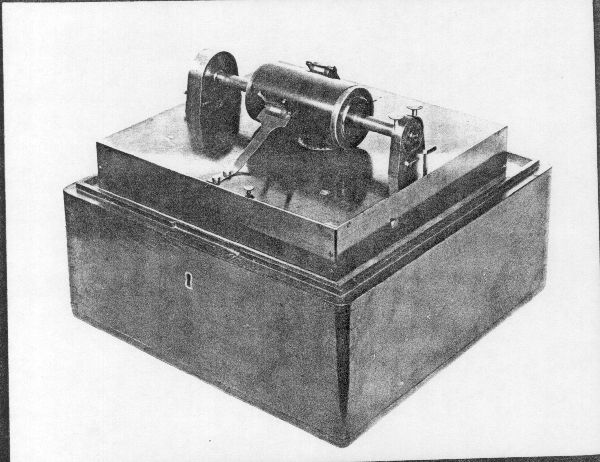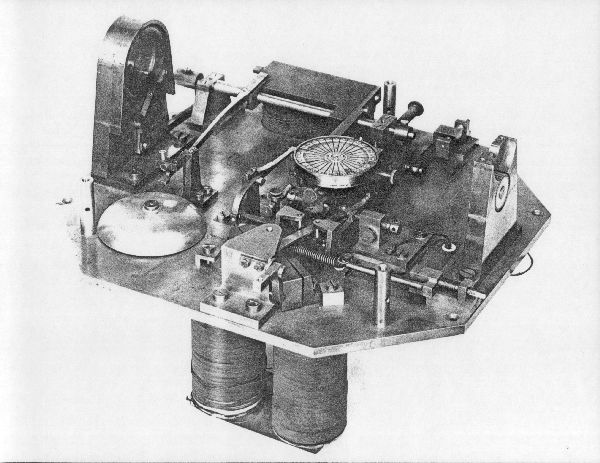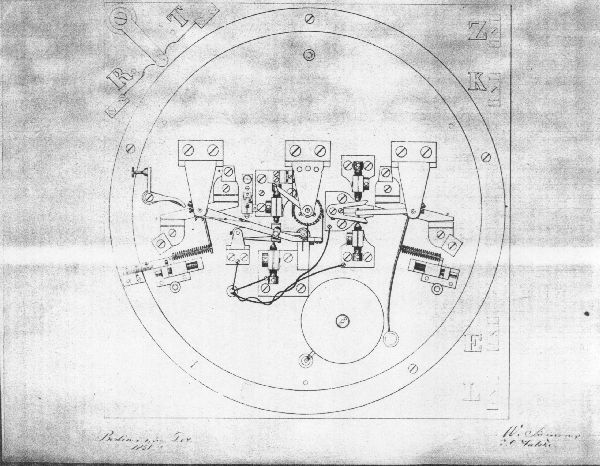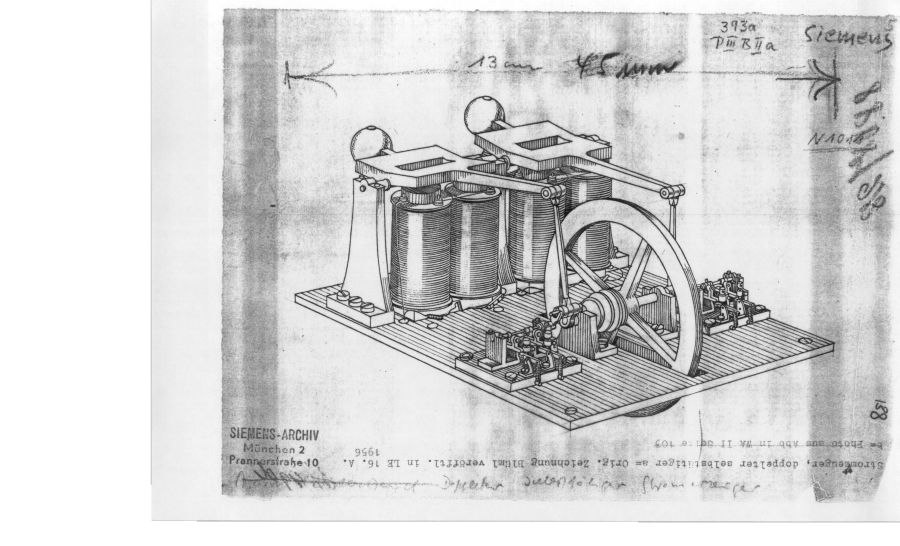These pages show the history of the Telegraph in Europe as represented by the
history and products of the major European telegraph manufacturing
company.
The first page shows a map of the telegraph lines in Europe in
1850. It helps to put the Siemens history and catalog pages into historical
context. This map includes the Optical Telegraph Lines (OPTSICHE TELEGR.
LINIE.), the Magnetic Telegraph Lines (ELEKTROMAGNET. TELEGR. LINIE.), and the
Railroad Lines With Electromagnetic Telegraph (BAHNLINIE MIT ELECTROMAGNET
DIENSTTELEGRAPHIEN.). It also distinguishes between the telegraph lines that
were built by 1849 (Solid Lines) and those that were planned to be completed
in 1850 (Dashed Lines). (The map is from the book Hundert Jahr Telegraphie in
Frankfurt edited by the Oberpost Direktion, Frankfurt am Main in 1949.)
European Historian Professor Dr. Franz Pichler has provided me with the
following information about the "unidentified" line that goes from Frankfurt
to Eisenach with the round insulators: "The Line that went from
Frankfurt-Eisenach is part of the Prussian telegraph line that went from
Frankfurt-Berlin. It was opened for private use on August 31, 1849. Before
that time it was in military use. It was a landline consisting of 1 iron wire
mounted on poles with insulators of Porzellan ( not the later invented
"Doppelglocken-Isolatoren" (Double Insulated) but "Einfachglocken-Isolatoren"
(single-insulated)). From Eisenach to Berlin it was a cable line using the
Guttapercha covered cable promoted by Werner Siemens. (As we now know, this
Guttapercha insulation did not last very long.) In 1849 the line used the
"Zeigertelegraphen" made by Siemens with the Wagner Hammer for moving the
pointer, later, from about 1851 on, it used the Morse Telegraph ( with an
embossing register and from 1855 with an ink-writing register ). For
batteries, first the Daniel Element was used and later the Bunsen Element and
finally the Meidinger Element was installed."
The next 15 pages show the history of the Siemens Companies.
There is a brief summary in English followed by a more detailed narrative in
German.
The final 48 pages show a Siemens & Halske Catalog and many
illustrations of their early instruments. All narrative text is in
German.

For Enlarged Version, Click Here ...Then, if necessary, Click Image to get Enlarge Button. Then Click Enlarge Button:

